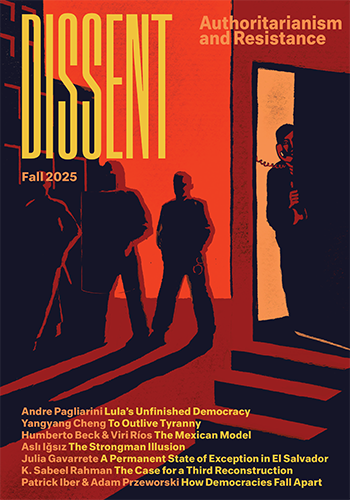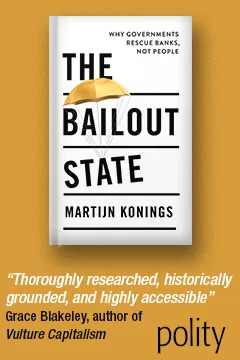History and Hope for Occupy Wall Street
History and Hope for Occupy Wall Street
Paul Adler: History and Hope for Occupy Wall Street
Note: While the author has been involved with Occupy K Street in Washington, D.C., the views expressed are his alone.
As Occupy Wall Street and its many companion protests continue, the pressures arising from city governments shutting down encampments, increasingly cold weather, and the difficulties of sustaining any such mass mobilization will only intensify. If and when the tents come down, expect a rash of commentators, both hostile and sympathetic, to expound upon why yet another populist eruption has failed.
While some of these critiques will be insightful, many will be premised on two common misrepresentations of what a social movement is and what it means for one to ?succeed.? First, critics often emphasize only the most immediately visible elements of a movement, defining it by these features alone. Second, critics of social movements can fall into an unspoken utopianism, where the inability of the movement to win every goal it proclaims means it should be written off as a failure.
The global justice movement (often derided as the ?anti-globalization movement?) provides an instructive example of the limits of such analyses. The global justice movement is often seen as a failure by those whose conception of the movement is based solely on the large street demonstrations held in the United States in the late 1990s and early 2000s. If one judges the movement only by these marches on the one hand, and its inability in those years to transform global capitalism on the other, then declaring it a failure certainly seems accurate. However, examining the movement beyond these parameters yields a different picture.
First, the protest mobilizations between 1999 and 2003 were an escalation of an existing movement, not the beginning of that movement. The dramatic episodes in Seattle and elsewhere built on decades of global mobilization around issues of economic and ecological justice, from the Nestlé boycott to mass mobilizations in nations such as India against ecologically catastrophic World Bank projects. Similarly, Occupy Together is not the first example of resistance against corporate power in the era of the Great Recession. Rather, it is a new entrant into an existing movement ecosystem, including ongoing fights on issues such as foreclosure and labor rights.
While a few years of protest did not overturn neoliberal globalization, they did help to inspire and further efforts to build a more just global economy, like United Students Against Sweatshops. Founded in 1998, USAS gained members, inspiration, and organizing experience from the mobilizations around Seattle and subsequent protests. This aided USAS in achieving a steady series of victories in campus-based unionization struggles, as well as tangible changes in the practices of the global garment industry. Alumni of USAS can be found throughout the labor movement, bringing new perspectives and hard-won experience to global struggles for workers? rights.
Similar dynamics can be found in past movements. Even if Occupy Together all but collapses in the near future, participants should take some comfort from the fact that many a movement?s influence has lived on after its apparent demise. Take the Industrial Workers of the World (or ?Wobblies?), the radical union started in 1905 that was all but destroyed by the end of the First World War. While over the course of the 1920s it appeared that the IWW was only a distant memory, the industrial union upsurge of the mid and late 1930s saw its value reaffirmed. Among the most influential figures in building the powerful unions of the Congress of Industrial Organizations (CIO), one finds a number of ex-Wobblies, including International Longshore and Warehouse Union head Harry Bridges and Len DeCaux, who spearheaded the CIO?s popular education efforts. The experiences and drive these leaders, alongside many a local union organizer and activist, took from their time in the IWW helped them to infuse the CIO with a more expansive vision of what a union, and the larger society, could look like. While labor today is distant from these great heights, it is hard to deny that the 1930s organizing wave made real and sustained progress.
Or take the example of the black freedom struggle in the decades before the Montgomery bus boycott. Many key figures from the movement?s peak in the 1950s and 1960s, such as Ella Baker and Bayard Rustin, were involved in fights for racial justice in the 1930s and 1940s that yielded few concrete results at the time. Rustin, for example, participated in an action challenging segregation on interstate buses in 1947 that mirrored the ?Freedom Rides? thirteen years later, but that at the time seemed a failure. Those initial defeats helped hone these individuals? organizing skills, allowing them to become key organizers of and trusted mentors to the movement when conditions for activism proved riper.
It bears repeating that no one knows the direction Occupy Together will take in the months ahead. Yet, just as with these past movements, its ostensible ?end? will likely not be the final word. As the occupations continue, I hope activists increasingly connect with and add their weight to ongoing struggles for social and economic fairness. Bringing some of the energy of Occupy Together to more institutionalized activism has the potential to produce constructive tension between reformers and radicals, established and new activists. Such tension has proven crucial to movements from abolitionism onward. Already we can see concrete signs that the protests are breathing new life into existing movements, from the rapid growth of the AFL-CIO?s community affiliate, Working America, to intensifying efforts to fight foreclosure, to initiatives from political leaders, such as President Obama?s student debt proposal.
The future may be uncertain, but those out in the parks and streets should have faith that, even if they cannot always perceive the effects of their activism, it is having an impact.






